An early Bronze Age cemetery discovered near Helensburgh by GUARD Archaeology has revealed long-lost secrets of burial rites from Bronze Age Scotland.
Following the excavation by a team of GUARD Archaeologists in 2020, the results of specialist analyses have only just now come to light.
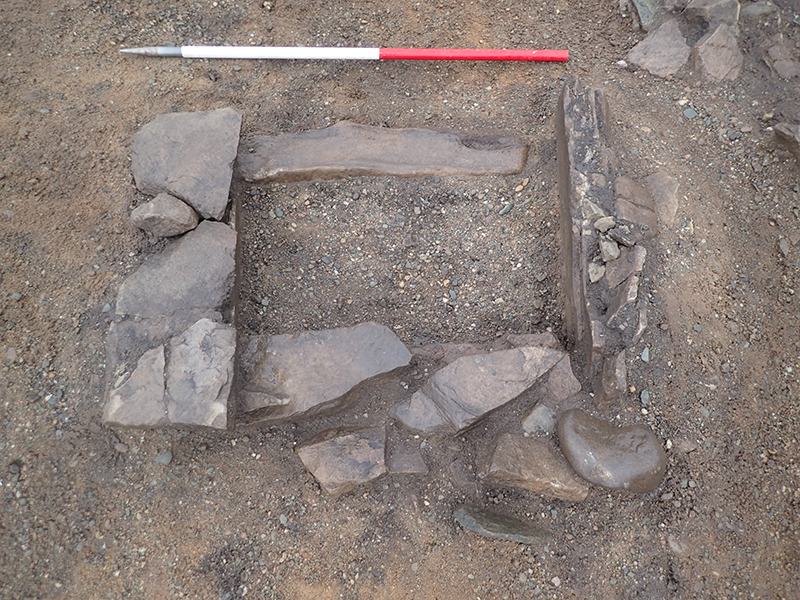
The oldest of the stone-lined graves, or cists, was dated to 2467-2290 BC. Strangely it contained no human remains, but only fragments of pyre material, which appear to have been sufficient to represent the dead.
The largest of the three cists Cist 1, and Cist 3, were constructed at least three centuries later c. 2140-1930 BC. Both contained the cremated remains each of at least two adults and a child or young person, but with no grave goods.
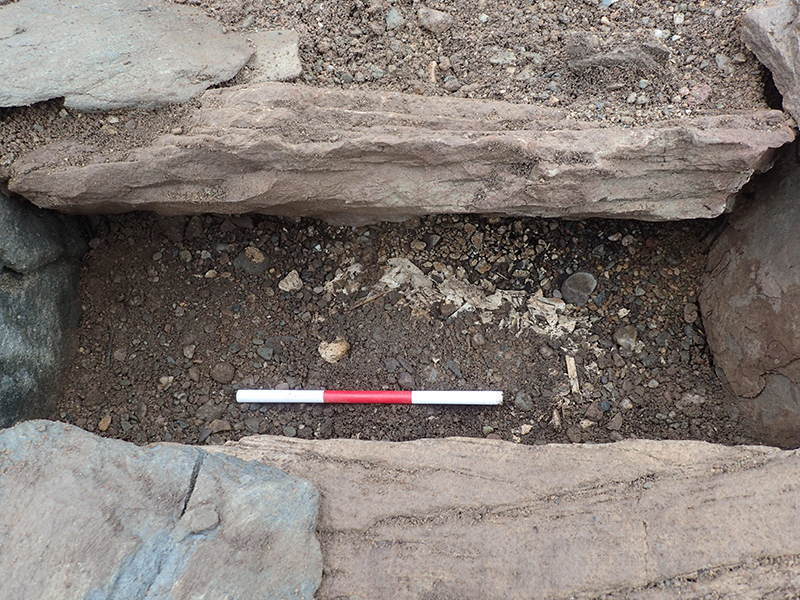
‘The long span of time between these cist graves indicates the lasting memory of burials here,’ said Iraia Arabaolaza, the principal author of the GUARD excavation report. ‘The reuse of the burial place at different periods may have reinforced land ownership or connections to ancestors.’
The place was then revisited between 50 and 300 years after the cist burials, at a time in the first half of the second millennium BC when the burial rituals had changed again, to that of using a pottery vessel to hold the cremated remains then buried at the bottom of a pit. Most of the cremated remains that were found from this phase of use also included one or two adults and a young person together.
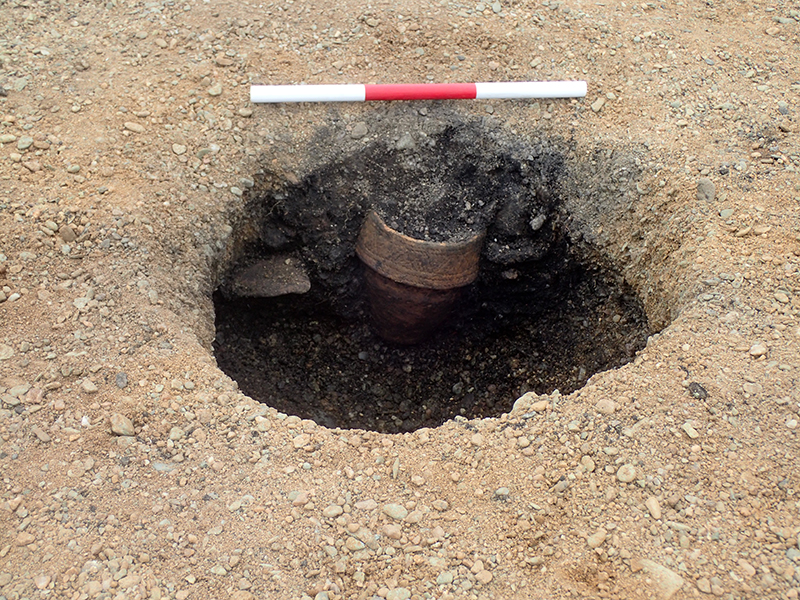
The remains of at least 14 adults and 6 young persons were recovered from the cemetery. The burials contained multiple individuals that had been cremated and then collected together and buried as part of the same rite.
‘The incomplete nature of each of the individual remains suggest that the rite of cremation and burial were more important than keeping/collecting and burying the person as whole,’ said Iraia Arabaolaza. ‘This cemetery complex is not only chronologically diverse, but it also reflects the differences in the burial rites and material culture. The burial of multiple people together, part of the same burial rite and possible part of the same cremation process indicates the importance of the cremation rite and the community rather than the individual and the preservation of its body as a whole.’
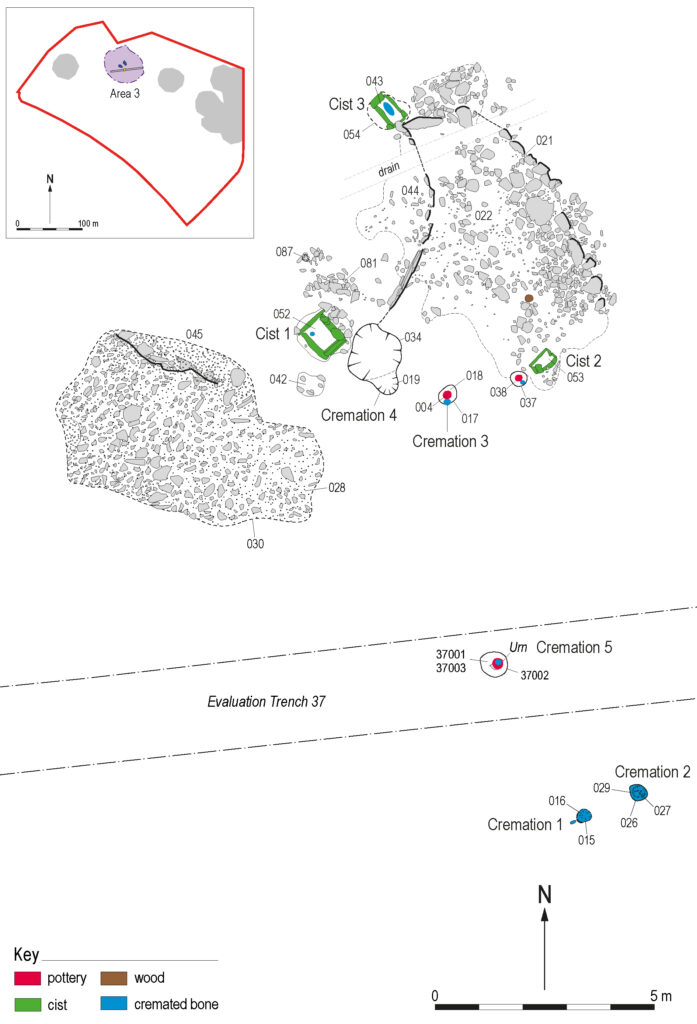
The GUARD Archaeologists discovered that this Bronze Age community were not the first people to occupy this site. A late Neolithic kerbed cairn from around 3500 BC and that had once been fronted by an impressive stone façade, had been cut into by the Bronze Age stone cist graves.
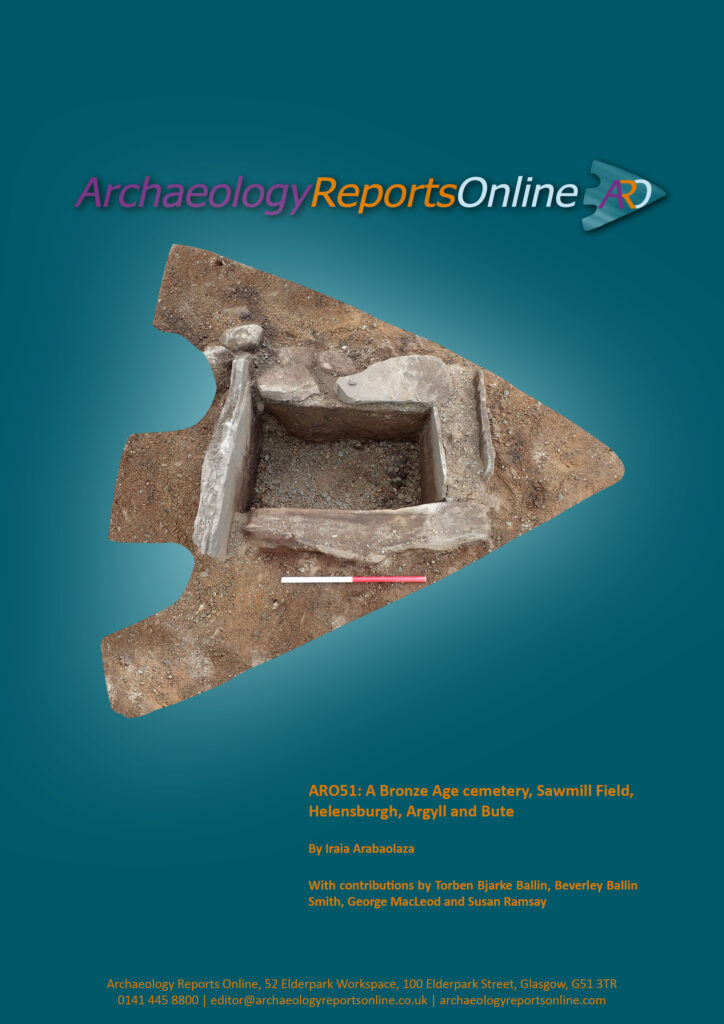
And the recovery of flint tools dating from about 5,000 years before even that, around 8,400 BC, indicate that some of Scotland’s earliest inhabitants, during the late Upper Palaeolithic or early Mesolithic periods occupied this site too.
The archaeological work was funded by Bellway Homes and was required as a condition of planning consent by Argyll and Bute Council who are advised on archaeological matters by the West of Scotland Archaeology Service, who considered there to be a potential for hitherto unknown archaeology to be buried at the site.
ARO51: A Bronze Age cemetery, Sawmill Field, Helensburgh, Argyll and Bute by Iraia Arabaolaza is freely available to download from Archaeology Reports Online.

